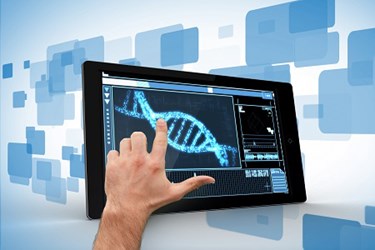Molecular Biologist Invents Handheld Device For Analyzing DNA Of Diseases

Jonathan O’Halloran, a molecular biologist, has created a handheld device that analyzes the DNA of infectious diseases. O’Halloran’s device can identify mutations in the DNA of a disease in 15 minutes or less.
O’Halloran recently gave a talk at Wired Health about how the new technology could potentially be applied to outbreaks of infectious diseases, such as swine flu or malaria. This way, O’Halloran says, mutations can be quickly identified and scientists and public health officials on the ground can determine when a drug becomes drug resistant. O’Halloran ultimately wants to make molecular diagnostics more accessible to everyone, and he’s called certain diseases, such as drug-resistant TB, a “massive concern to us.” Researchers estimate that drug-resistant TB costs as much as $1.6 billion to treat globally every year.
Instead of worrying about spending large amounts of government funds to develop drugs and treat diseases, O’Halloran wants to contain them. He’s called the solution “The internet of life.” O’Halloran says, “We are going to interface the genomes of bacteria and different pathogens and translate the genetic code into binary code,” said O’Halloran. “With lots of these devices all over the world we would be able to identify any emerging threat and pick up any drug resistance.”
O’Halloran believes that the £500 cost of his device will eventually be reduced. Currently, each test conducted on his device will cost about one dollar each. The device will have the ability to monitor certain areas where tests are conducted as well as upload all of the data recorded to an online cloud along with GPS data.
The device analyzes a pinprick of blood, which is blended to break open cells and release DNA. This DNA is then extracted and is sampled and amplified by the polymerase chain reaction (PCR) technique. The genome, once amplified, is tested over the course of 15-20 minutes — a much shorter time period than the traditional virus testing methods.
“We are doing this in minutes at the patient's side, sending the data to the cloud and making sure the patient gets the right therapeutic at the right time,” said O’Halloran. Following internal tests, the device could eventually enter a trial in Gabon.
